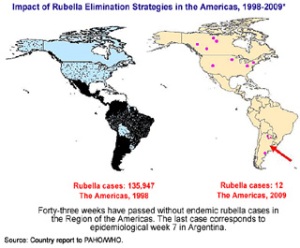In this particular blog I will continue expanding on my line of thinking regarding what I consider to be the basic abnormality in the brains of individuals with autism spectrum disorders. I opened this discussion with a blog on tuberous sclerosis (http://bit.ly/197Ustc ) and have followed the same with discussions of other conditions like Ehlers-Danlos (http://bit.ly/ISD01s ) and the Smith-Lemli-Opitz (http://bit.ly/1eYcT3K ) syndromes. A large percentage of patients with these conditions manifest autistic symptomatology.
Individuals with a known cause to their autism spectrum disorders are called “syndromic”. The term syndromic is used to differentiate these individuals from those where no known cause is apparent. The latter patients, having an unknown origin and comprising the majority of patients, are called “idiopathic”. It is my belief that by looking at the similarities in the underlying brain abnormalities of syndromic autism we may find what is wrong in the idiopathic cases.
There are many inciting agents for syndromic autism, including viruses, genetic mutations, and medications. Those caused by viruses are some of the oldest and better-known causes of syndromic autism. An early study by Dr. Stella Chess, Professor of Child Psychiatry at New York University Medical Center, in 243 preschool children with congenital rubella identified 10 patients with autism and an additional 8 that fell within the spectrum (Chess, 1971).
Since vaccinations (specifically against MMR) have diminished the number of individuals infected with the rubella virus they have also, albeit indirectly, diminished the total number of autistic individuals. The reduction, unsurprisingly, is due to the diminished number of syndromic cases caused by this infection (Berger et al., 2011). This and other studies provide an important incentive to maintain high measles-mumps-rubella (MMR) vaccination coverage in the general population.
The “Wakefield-scare” which prompted vaccinations rates in the UK and Ireland to drop sharply was followed by the resurgence of measles and mumps infections with consequent injuries and reported deaths. It is unfortunate that the loss of human lives have been the cost of the vaccine-autism controversy. The unfounded allegation against vaccines has been called “the most damaging medical hoax of the last 100 years” (Flaherty, 2011). This is of major importance as vaccine fanatics still misconstrue available data in order to forge their erroneous ideas on the public (http://onforb.es/197XH3C ). It is amazing to see support for a movement that lacks credible supporting data, whose witnesses in courts of law have been discredited, and rely on “research” articles retracted for fraudulent content.
Although vaccinations have reduced the total number of congenital infections, the same are still a major problem in our society. Cytomegalovirus is the most common infection, affecting 1 in every 100 live birth. Fortunately the incidence of rubella has decreased to about 1 in 100,00 live births. Individuals with congenital rubella infections usually manifest hearing loss, ocular abnormalities (e.g., cataract, infantile glaucoma), and heart disease. Neurological manifestations include mental retardation, diminished muscular tone in the extremities, and small head size. Psychiatric manifestations include high rates of impulsivity, tantrums and self-injurious behaviors. Clinicans should keep the possibility of congential rubella in mind if they ever examine an autistic patient with multiple congenital anomalies.
For syndromic autism the viral infection occurs during brain development never in adult life. The infections are characterized by destruction of brain tissue during an inflammatory response. Still what I consider striking is that the rubella virus interferes with the process of cellular proliferation causing many affected individuals to be born with small heads. These individuals usually have cysts in the place where the dividing cells that give rise to the cerebral cortex are present (the so-called germinal matrix). This is the same pathology (i.e., some type of insult to the germinal matrix) observed in many other cases of syndromic autism of varied causation, e.g. Ehlers-Danlos, cocaine ingestion during gestation, tuberous sclerosis.
It appears that most syndromic cases of autism exhibit the same commonality: an abnormality of cellular proliferation in the germinal matrix that is presumed to give rise to the cerebral cortex. This alteration causes migratory abnormalities to the cerebral cortex and a desynchronization in the maturation of different cellular elements. Neuropathological evidence backing this supposition has been proven in idiopathic autism (Casanova et al., 2013). These findings offer a ready explanation to many of the symptoms exhibited by autistic individuals like sensory hypo- and hypersensitivities, motor abnormalities, and seizures.
References
Berger NE, Bavar-Bogan AN, Omar SB. Congenital rubella syndrome and autism spectrum disorder prevented by rubella vaccination- United States, 2001-2010. BMC Public Health 11:340, 2011.
Casanova MF, et al. Focal cortical dysplasias of the cerebral cortex as enablers of neuroprosthetics. Front Sst Neurosci 8(7):77, 2013.
Chess S. Autism in children with congenital rubella. Journal of Autism and Childhood Schizophrenia 1(1):33-47, 1971.
Flaherty DK. «The vaccine-autism connection: a public health crisis caused by unethical medical practices and fraudulent science». Ann Pharmacother 45 (10): 1302–4, 2011.



